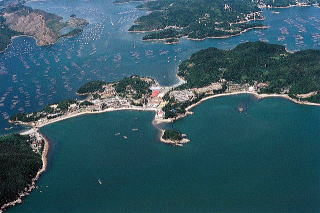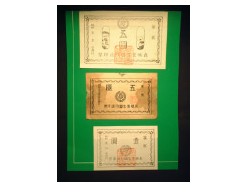Asian Sorrows
The Ginseng Hunter, Jeff Talarigo, 2008
Austere tale of a third generation Korean living just across the border in China near Yanji. The grandfather was moved to China by the Japanese for labor. The father and uncle become Ginseng hunters and teach the son their secrets. The first part of the novel is a compact but detailed look at the art of hunter for wild Ginseng plants in the mountains. Once found, the Ginseng plant must be very carefully dug up without damaging the often crooked and complex root. The value of the plant depends on its age but any damage will leave the root worthless. It may require hours to dig a single root.
Written in the first person by the son, we are taken into an austere self sufficient life. The hunter lives alone and enjoys his solitude. He tried living with a woman once but it didn’t work out. He visits a brothel during his monthly trips to Yanji in the warm seasons to sell his ginseng and buy supplies.
During one one trip he meets a Korean prostitute and for the first time can’t get her out of his mind. They start meeting in parks during his visits and we learn her tragic story and the start of the novel’s preoccupation with the story of the Korean people under the incompetent rule of Kim Jong-il, son of North Korea’s founding dictator. We learn of the constant reeducation and intimidation as the country falls apart and the people starve. The Korean prostitute had a husband who worked in the mines and a daughter who attended school. The mine closed and her husband was detained and never returns. The daughter dropped out of school to help her mother scrounge for food. They spot the daughter’s former teacher scrounging for food and realize the school is closed. The daughter is killed by government authorities and the woman runs away to China where she is taken to the brothel by a trucker. She realizes she will be fed and sheltered so stays in the brothel.
As things deteriorate in Korea, more and more cross the shallow river to China looking for food, jobs, or trade. The Chinese government offers rewards to return illegal Koreans to the border and pressure businesses to get rid of their Korean workers. A young Korean girl visits the ginseng hunter’s garden to steal corn and the hunter decides to try to take care of her. He realizes he will need help to raise a young girl and goes to the brothel to try to buy the prostitute but she is no longer working there. He travels downriver looking for her as winter sets in. He realizes that the industrial plants built on the river on the Korean side are all shut down.
The hunter is loaned a hand gun by his neighbor to help protect himself from encroaching Koreans including armed and starving soldiers, who are starting to cross the river looking for food. He can’t bring himself to use the gun, but he does assist in turning over some Koreans to be returned to the border for which he receives money. For penance he buys all the seaweed from a Korean woman using his bounty money so she can take the money back home.
The author spent considerable time in Yanji and the surrounding region learning about ginseng hunting and hearing the takes of terrible happenings in North Korea. He assembles some of these stories into a compact, compelling, story. It is not a story of hope but a testimony to the strength and endurance of people under harsh and trying circumstances.
The Pearl Diver, Jeff Talarigo, 2004
Aerial View of Nagashima Leprosarium 
The author’s first novel follows the life of a Japanese pearl diver who contracts Hansen’s disease (Leprosy) as a young woman in 1948. As was the practice then, she was sent to an isolated Leper’s colony on a small island at Nagashima. The first drugs that stabilize the disease have just been discovered and she is able to live a full life without the disfigurement of the disease. This being Japan, the disease comes with a shame and stigma that attaches to her whole family and prevents her older sister from marrying. The family abandons her. We follow conditions and treatment in the colony where the patients are treated more as prisoners than as sufferers of a horrible disease. As time passes more drugs are discovered and doctors learn to differentiate contagious from non contagious carriers. It eventually becomes possible for individual patients to reintegrate into society if they wish, but as with prisoners, it takes our heroin some years and several experiments before she tries to return – but never to her home island. Will she remain in society or return to the colony to live out her life? Very readable and a reminder of what it was like to contract an ancient disease that is all but eradicated in much of the world today.

